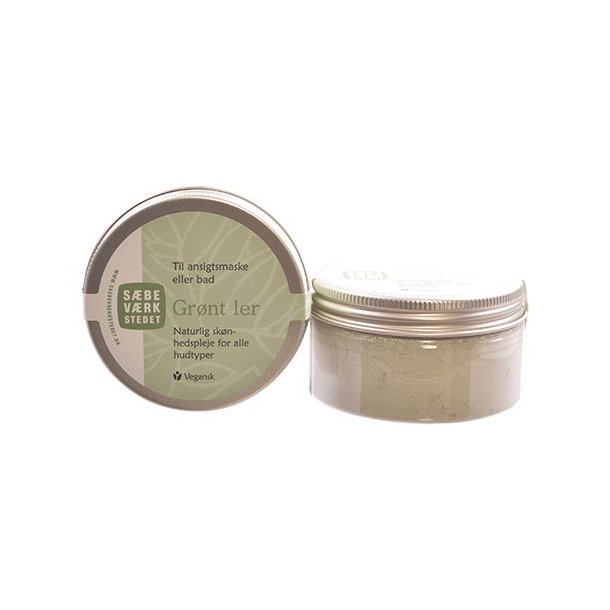Soap Workshop Green Clay for Face Mask - 50 g.
Unit Price for 1 pcs.
12,00 €
Unit Price for 2 pcs.
11,43 €
Sæbeværkstedet - Hudprodukter

Description
This is a 100% Google translation of our Danish products description.
The Soap Workshop Green Clay for face mask or bath
Price unit = 1 bucket of 50 g. - enough for approx. 5 clay masks.
Description/use: < /p>
Green clay for all skin types. The clay is good for a face mask as it has a unique ability to absorb impurities and release minerals. Furthermore, it is very good to use in a tub, where it cleans and softens the skin.
Face mask:
Mix 2-3 tbsp. green clay clay with two tbsp. water or spring water. The water may can be replaced by chamomile tea, roe bush tea, rose water etc. Leave the mask on for approx. 15 minutes and wash off with lukewarm water. There is enough in one cup for approximately 5 face masks. Finish with a nourishing face cream or oil.
Tub and foot bath:
A spoonful of green clay clay in a tub or foot bath cleans and softens the skin.
The color is mainly due to a rich content of iron oxide and magnesium, but also other minerals. The PH is about 7. By virtue of its content of its ability to absorb impurities and its high content of micronutrients is green clay.
Recent scientific studies have demonstrated a number of beneficial effects of clay. The clay activates the body's own resources and restores its natural balance. Clay has the ability to absorb toxins, while at the same time supplying the body with necessary minerals, e.g. manganese, selenium, and iron.
Sæbewerkstedet's clay is dug up from pits underground, dried in the sun and ground into a very fine powder. Thorough laboratory control of the composition and purity of the clay is carried out. Clay has been known and used for the care of health and well-being since early times and in several places on earth.
3000 years ago it was used against inflammatory conditions, for wound healing and embalming. The ancient Romans used the clay for broken bones, and mud baths were also a widespread tradition. In recent times, the great pioneers of clay in France have been the married couple Gallon and Dr. Jean Heitz, who in 1953 founded the company Argiletz. In the 50s, they took to health food magazines and once again spread the message about the amazing properties of the clay.
Today, the clay is thus still sold in health food magazines and on the French pharmacies, both in its pure form for poultices and internal use, and in processed products, shampoo, toothpaste, face masks, etc.
